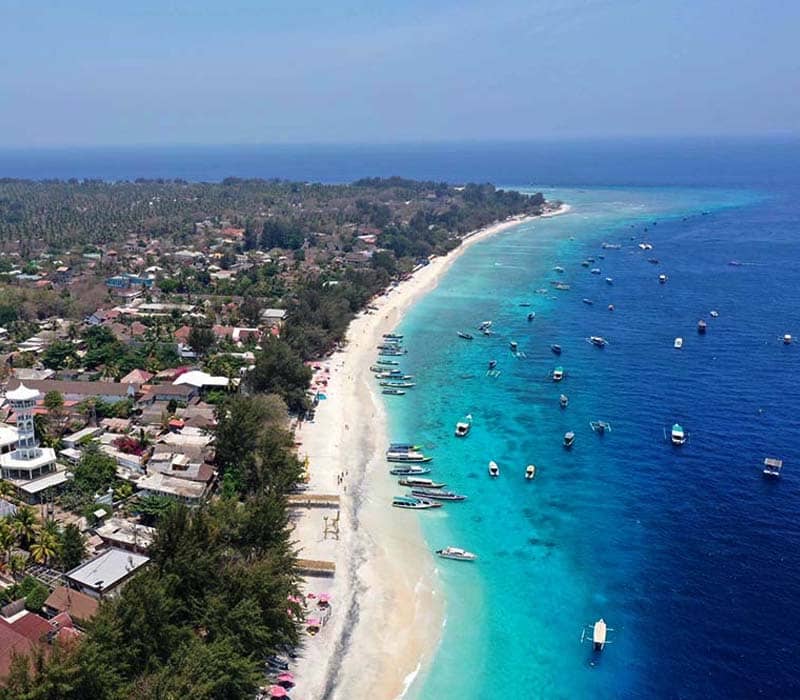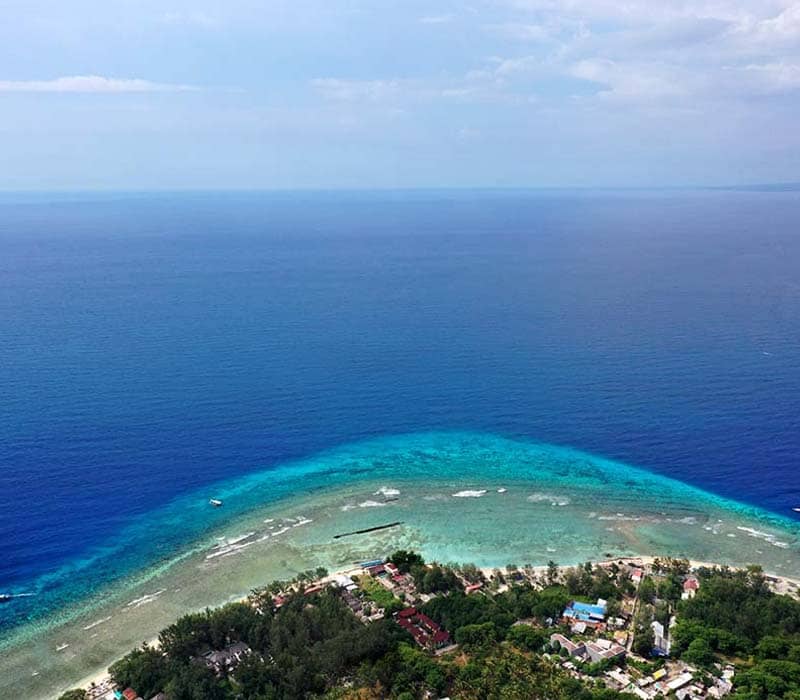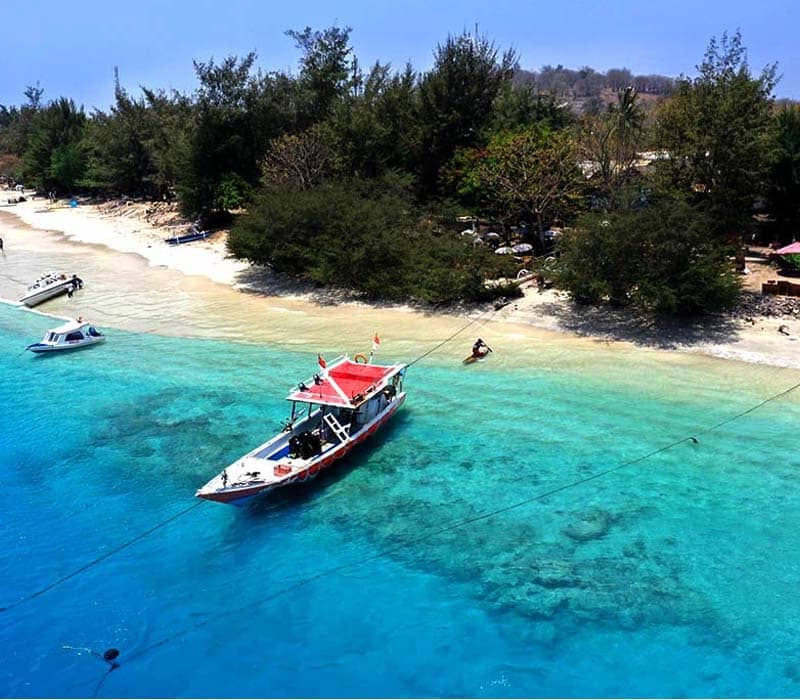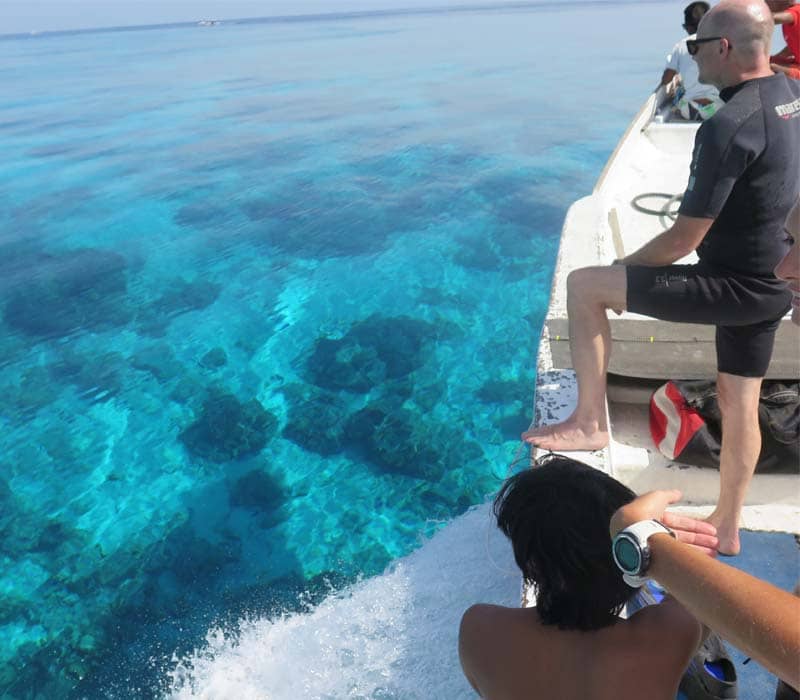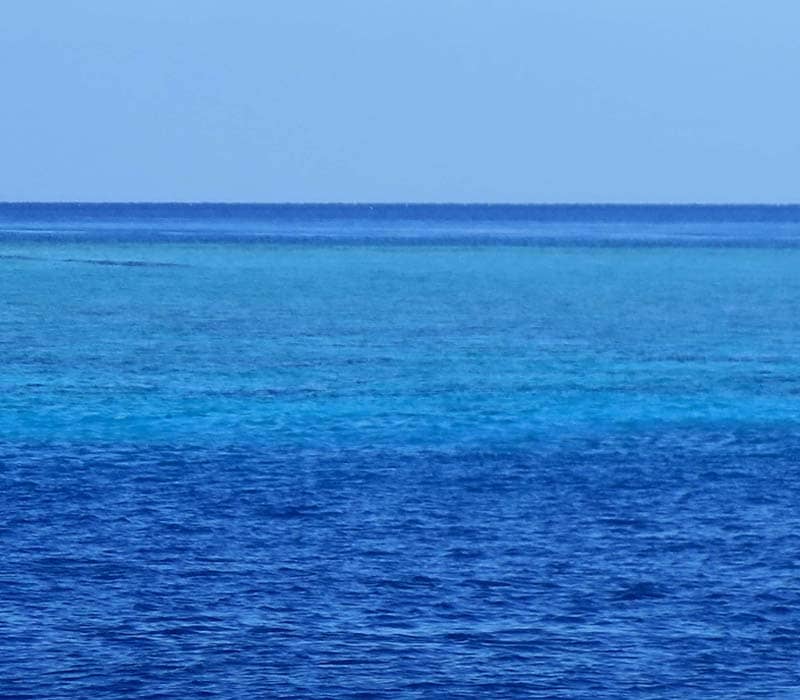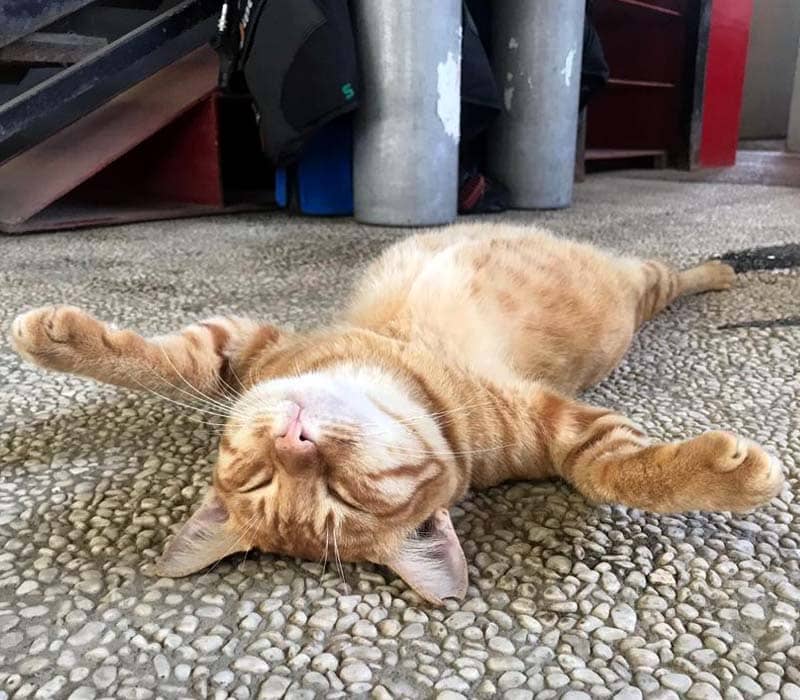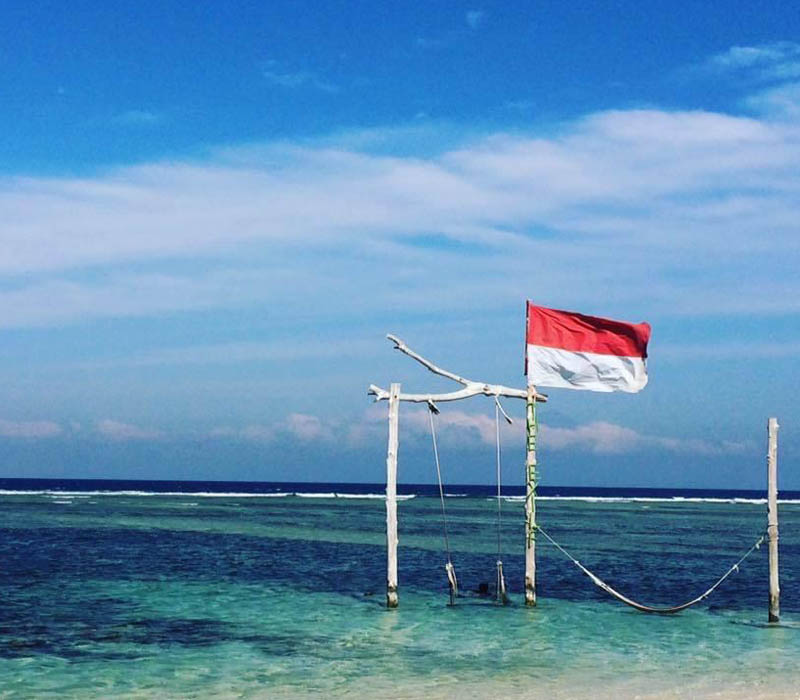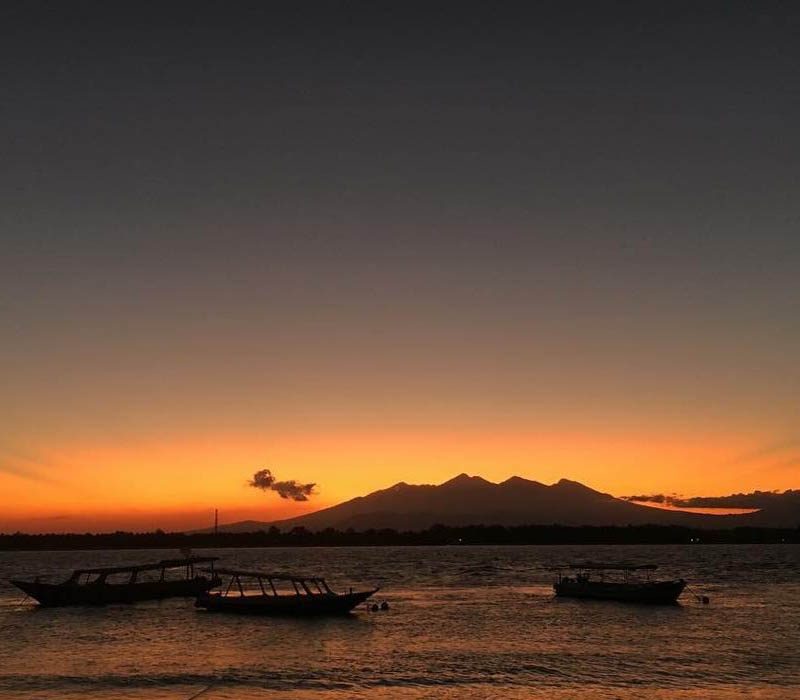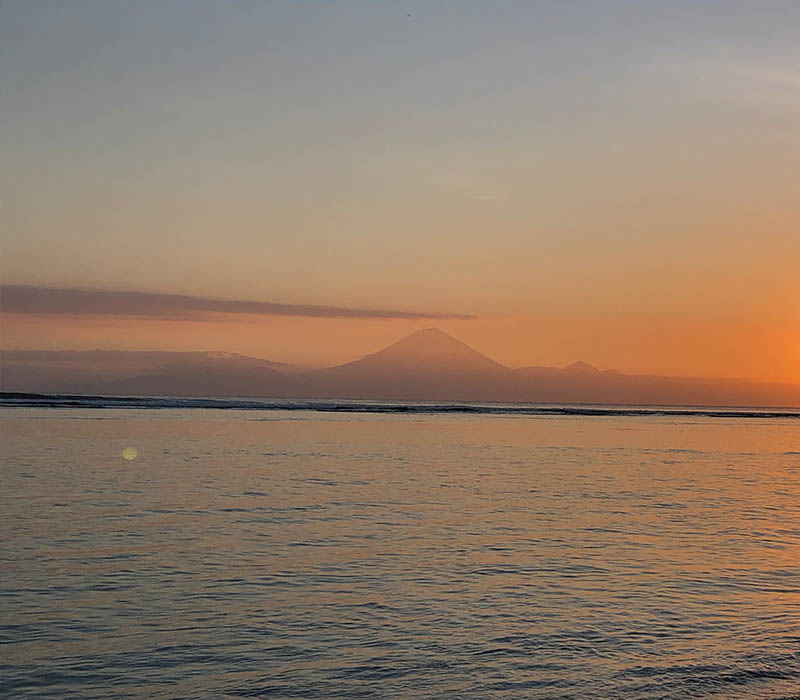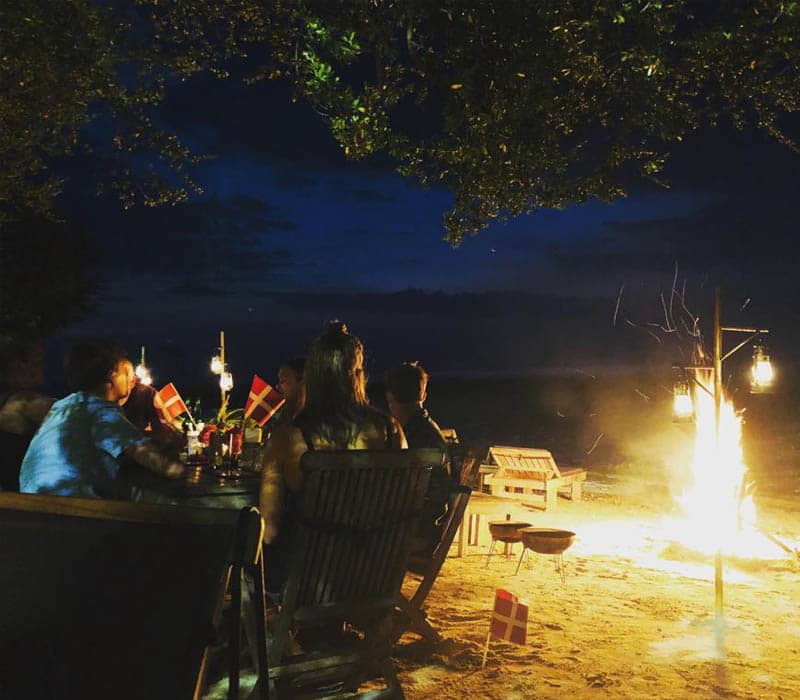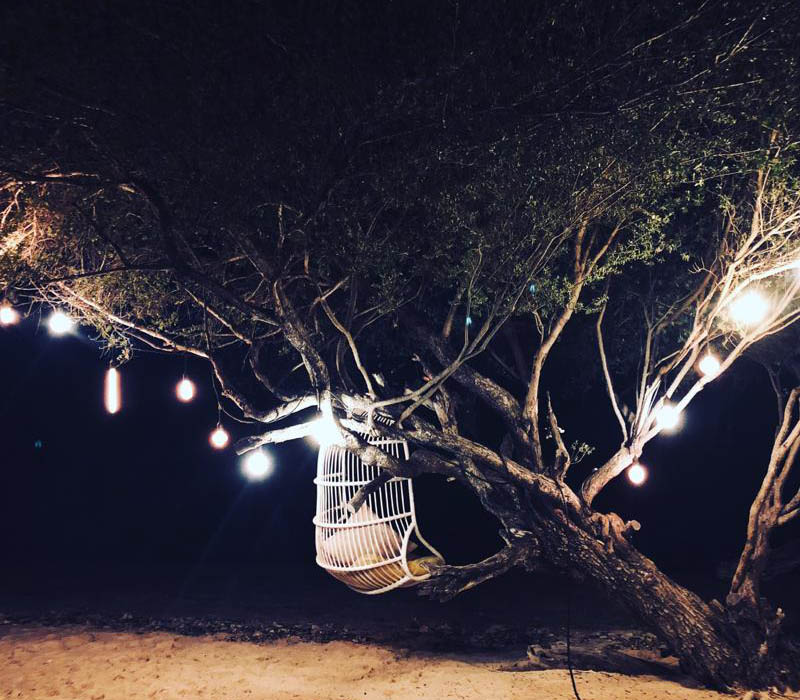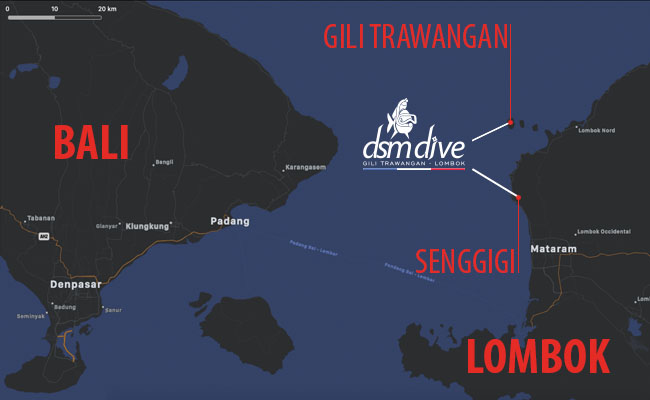ABOUT GILI TRAWANGAN
DSM DIVE | The way you want to dive
GILI TRAWANGAN NUMBERS
GILI TRAWANGAN
The Gili Islands are an archipelago of three small islands: Gili Trawangan, Gili Meno, and Gili Air, just off the northwest coast of Lombok, Indonesia, lying about 35 km east Bali.
The name “Gili Islands” is a misnomer because “Gili” means “small island” in Sasak (the language of Lombok). There are many Gilis around Lombok, but the Three Gili Islands of Gili Trawangan, Gili Meno, Gili Air are the most well known.
Gili Trawangan is the biggest and the further west of the three “Gili” from Lombok. Gili Trawangan is an island offering enormous activities and the most popular for scuba diving due to its marine life and beautiful coral formation. With famous dive sites like Shark Point, Halick, Sunset, Turbo, and since 2016 the famous wreck “Glenn Nusa”.
Due to its size, Gili Trawangan is a good balance island divided into different areas, offering a quiet and layback area atmosphere and a younger vibe and active region on the other side. Gili Trawangan is an island matching all personalities and needs of travelers worldwide looking for a peaceful area or more dynamic vibe island. In opposition to the two other islands (Meno and Air), more one-atmosphere style islands.
Cars and motorized traffic are prohibited on the islands by local ordinance, so the preferred method of transportation is by foot and bicycle or the horse-drawn carriage called “cidomo”, very useful when you arrive on the Island to reach your hotel with your luggage. This kind of transportation offers you a natural layback island lifestyle that makes you enjoy the Island in slow motion, perfect for disconnecting from the daily routine.
REACH GILI TRAWANGAN
ABOUT GILI TRAWANGAN
Gili Trawangan can only be reached by sea from different points : Lombok, Bali, Nusa Penida, Nusa Lembogan.
Depending on your departure point, you will use a local ferry or a speed boat, operating all day long.
FROM BALI
From Bali you have 2 options :
- You can use a speed boat company usually organizing a pick up from your hotel using minibus to bring you to the closest harbor and using speed boat to reach the island (depending on where you leave Bali but you have to count between 2 and 3 hours speed boat travel). Additional time has to be added to transit from your hotel to the harbor and can be very variable based on your location on Bali.
- You can also fly from Bali to Lombok and cross the channel between Lombok and Gili on a public boat (very low cost and typical) or private speed boat to reach Gili Trawangan in less than 15 minutes. Count two hours on cars from the airport to the harbor.
FROM LOMBOK
You can go to Bangsal, the main departure harbor to Gilis, and cross the channel using a local public boat (around 25 minutes to travel, with a departure every 25 minutes ). You can also use a private speed boat to reach the island in less than 15 minutes.
FROM NUSA LEMBOGAN OR NUSA PENIDA
You can transit to Gili Trawangan using some speed boat company that you can book through a local travel agency straight in the street from these islands.
WEATHER
Concerning the weather on Gili Trawangan, the temperature varies between 24°C (75°F) and 32°C (90°F) with an average water temperature between 27°C (80°F) and 29°C (85°F). Gili Trawangan is rhythm by two seasons: the dry season and the wet season. During the wet season, Gili Trawangan gets less rain than Bali and Lombok. Due to its size and the ocean surrounding the island, Gili Trawangan enjoys a microclimate that keeps the weather stable all year long, even during the wet season.
The best period to have clear, rainless days with perceived temperatures between 23°C (73°F) and 30°C (86°F) start from early June to late September with a peak of tourism in August.
The diving activity takes place all year long, and due to the topography and depth of the dive sites, the quality of the dive is not much affected by the weather conditions.
WEATHER TOURISM SCORE
AVERAGE WEATHER TEMPERATURE
AVERAGE WATER TEMPERATURE
HISTORY OF GILI TRAWANGAN
Initially, fishers from Sulawesi used the islands as a stop-off location for their voyages around the archipelago. Due to the limited resources of the Island, Gili Trawangan never been inhabited.
During the Second World War, the island was used as a lookout post by the Japanese forces to survey the boat traffic between Bali and Lombok during a short period. There are different stories concerning the origin of the name of Gili Trawangan, and one of them linked to this period: the word “Trawangan” is coming from the word “Terowongan” in Bahasa Indonesia that means “vision in the tunnel”. So Gili Trawangan, if we follow this story, means the “small island with tunnels » due to the bunker and underground tunnels built by the Japanese.
The second story concerning the name of Gili Trawangan is coming from its name in Sasak (the language of Lombok): the old name of Gili Trawangan in this story comes from the word in Sasak “Terangang”, the place where the turtles are coming to lay their eggs. So Gili Trawangan means, following this story, the tiny island where turtles give birth. Today Gili Trawangan has still named the island of turtles due to the many Green and Hawksbill sea turtles that we have all around in large numbers, which are the island’s pride. With time Gili Trawangan became a sanctuary for this kind of turtles which are species in danger worldwide but not around the Gili Trawangan
Both stories are presumably correct, so it’s up to you to choose the one you prefer.
In 1971, the governor of Lombok, Wasita Kusama, began to establish plantations and gave land rights to private companies. Three hundred fifty inmates from overcrowded Mataram prison were sent to help with the first harvests between 1974 and 1979, many of whom remained on the islands as permanent settlers. Following various difficulties with coconut harvests, the private efforts to exploit the island plantations were abandoned. The local population grew beyond their allocated bounds (100 hectares). It began to erect homes and businesses on the abandoned private land, which led to a land dispute that continues to the present.
In the 1980s, the islands started to be discovered by backpacker tourists, influenced by the exponential rise of tourism in neighboring Bali. At first, Gili Air (having the most infrastructure during that time) began to transform to cater to this new economy. However, Gili Trawangan soon surpassed it due mainly to its proximity to better dive locations.
During the 1990s, the Diving industry grew swiftly, and the islands began to develop into a world-class diving instruction location. This fed local tourism, and in the new millennium, a broader spectrum of accommodation and entertainment began developed that catered to a broader range of visitors.
In 2000, a non-profit organization called Gili Eco Trust was established in 2000 to help protect the coral reefs surrounding the islands and improve environmental education. It originated as cooperation between influential community members (Satgas) and the dive centers on Gili Trawangan. Many projects have been organized to protect and restore coral reefs, improve waste management, struggle against erosion, treat animals, raise awareness, and educate the environment as damages had occurred due to “El Nino”, a climatic phenomenon increasing water temperature and unsustainable local fishing methods.
In 2005, fast boat operations began from neighboring Bali. Several operators commenced services from various points around Bali and Nusa Lembongan to Gili Trawangan.
As of 2012, the islands continue to experience rapid growth and development related to the tourism industry. Efforts are being made to preserve marine habitats and remain culturally distinct from neighboring Bali in this process. The land, as mentioned above dispute remains unresolved until now.
Today, Gili Trawangan is a very balanced island offering many activities, improving its lifestyle quality and island vibes every day.
DIVE TRIP

